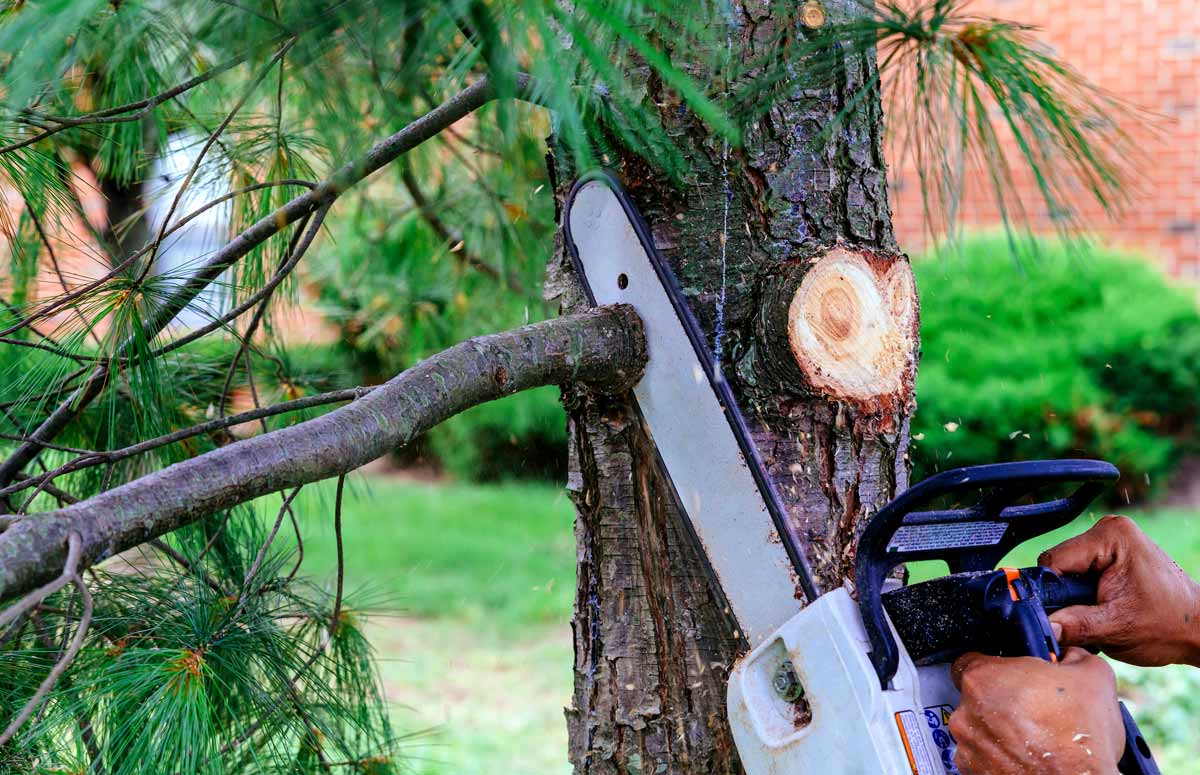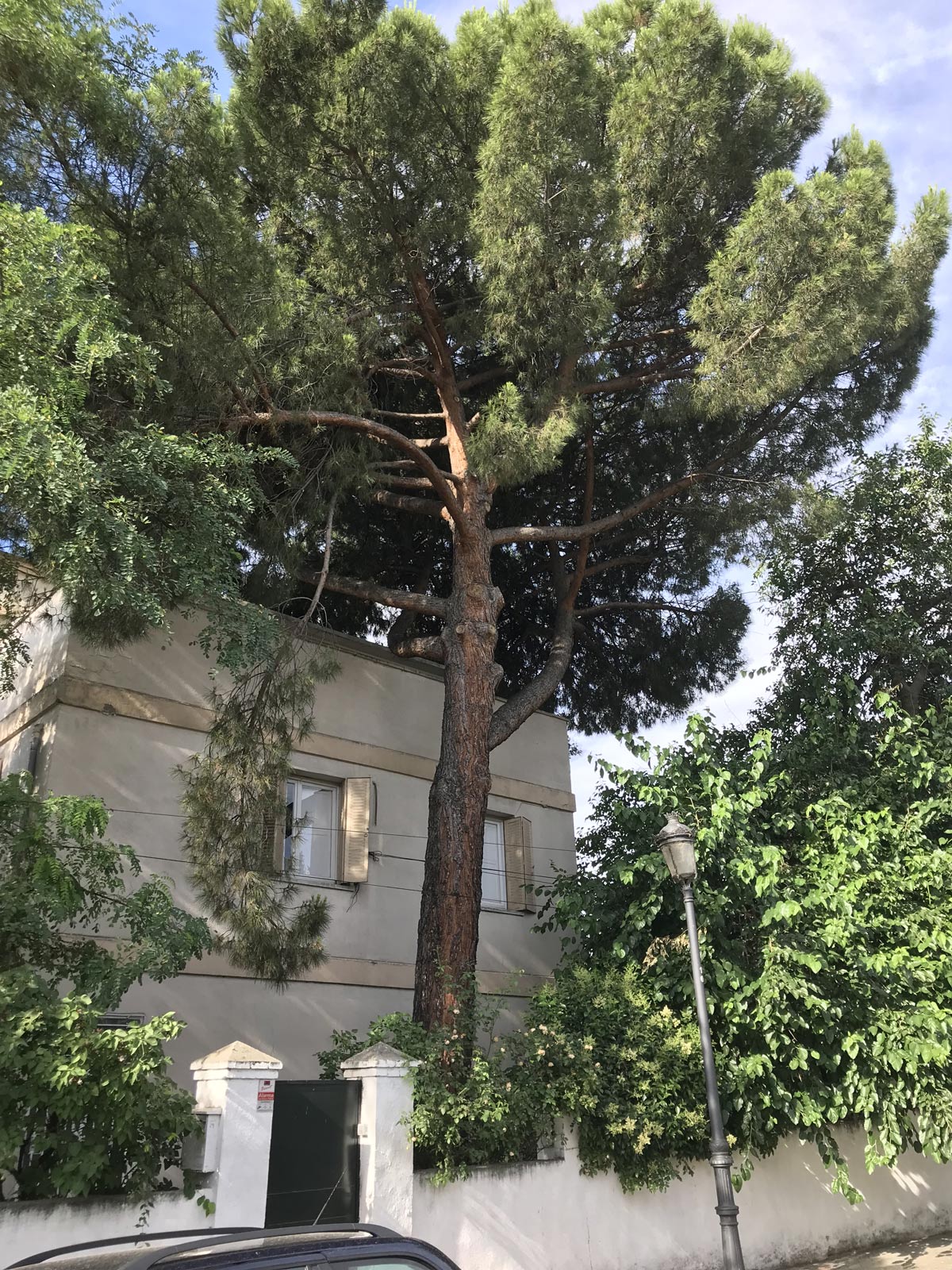Pine trees are easy to grow, as they require low maintenance. One of the unique characteristics of the trees is that they have a neat shape. However, they may need to be at times when encroaching on buildings or you want to let more light through to home or lawn.
Removing the lower branches is also known as “limbing up”. It is by far the easiest and cheapest method of trimming a pine tree. Arborists recommend limbing up your pine trees during late winter or every spring.
The cost to climb up a tree ranges from $100 – $350 depending on the size of the tree and the number of branches to be removed.
According to tree experts, when the pruning is done in late summer, the cuts will not heal before the start of the winter even if dressing and paint are applied to the cuts. Summer is also the high season for pests and diseases.

What we cover
ToggleCan I DIY Limb up my pine tree?
It is recommended to hire an arborist to do the work for you Tree experts are experienced and knowledgeable in maintaining pine trees. If pruning is done in an incorrect manner, you could actually do more damage than good.
The cost of trimming a pine tree varies depending on what is being done, but removing the lower limbs of the tree is by far the cheapest and easiest local tree service can perform.
Cost of tree trimming
The cost of getting a tree service to limbing up your tree will depend on the size of your tree and the number of branches you are looking to remove.
If it is a traditional pine with small branches shooting out from the trunk you are looking at $100 – $350 on average to remove the bottom 5 rows of branches.
If the tree is very large and you are looking to remove more branches, I suggest you get some quotes from local tree-cutting services.






Reasons why you should limb up Pine trees
Improving curb appeal
When they are well-maintained, pine trees can enhance the appearance of your home. The increasing visual appeal of your home can net you an extra 10% on sale prices so it’s well worth the investment.
Helps your lawn grow
By removing the lower branches of your pine tree, you will allow more direct sunlight through to your lawn below. This will have a positive impact on the health of your lawn and allow it to grow thicker and healthier.
Reduces fungal diseases
Pine trees are susceptible to fungal diseases when they have poor air circulation and no direct light to their trunk or branches. By pruning the lower branches of your pine tree you are allowing more light through and directly impacting the health and longevity of your pine tree.
Reduce heating bill in winter
If your pine tree is casting a shadow on your home, by limbing up the bottom branches, you will increase direct sunlight and reduce your overall heating costs in winter. Homeowners have noted a 30% decrease in power costs by using trees to their advantage in summer and winter.

Can Limbing have a Negative Impact on a Tree’?
If pruning is not done right or done at the wrong time of year, you can leave your pine tree open to invasion by pests or disease. To avoid this, I suggest using a certified arborist for the job.
How to limb up a Pine tree
Step 1 – Identify the number of rows you intend to remove. Depending on the size and type of pine tree you have, you should be able to remove at least 4 – 5 rows of branches.
Step 2 – Make sure you select the right tool for the job. A handsaw or a chainsaw will do the job. Make sure they are sharp and have not been used to cut diseased branches of other trees recently. This can cause cross-contamination.
Step 3 – Three-part cut. Firstly you need to remove the main branch to a stub before going in for a close collar cut. Use the technique below.
Differentiating between limbing up and canopy lift
There is no real difference between limbing up a tree and a canopy lift. Limbing up is normally used when referring to the removal of lower branches on a pine tree. Canopy lift or crown lift are general terms used by arborists to describe the removal of the lower limbs of any tree.
Some Alternatives to Tree Limbing
1. Reduction
It involves the removal of the outer 10-20% of limbs to reduce the overall size of a tree’s canopy. Normally it is the removal of 3rd and 4th order branches from trees.
2. Thinning
It is a pruning technique that aims to remove some branches from the inner canopy to reduce density. Thinning will also help to improve the look of your trees and increase airflow and light. This is helpful if the tree is totally blocking out the sun’s light from the windows of your home or grass.
3. Formative prune
This involves the training of juvenile trees to a single main leader and removing any crossing branches or other limbs growing towards the center of the tree. This is normally done in the first 10 years of a tree’s life to train its shape for the best aesthetic appearance and structural integrity.




